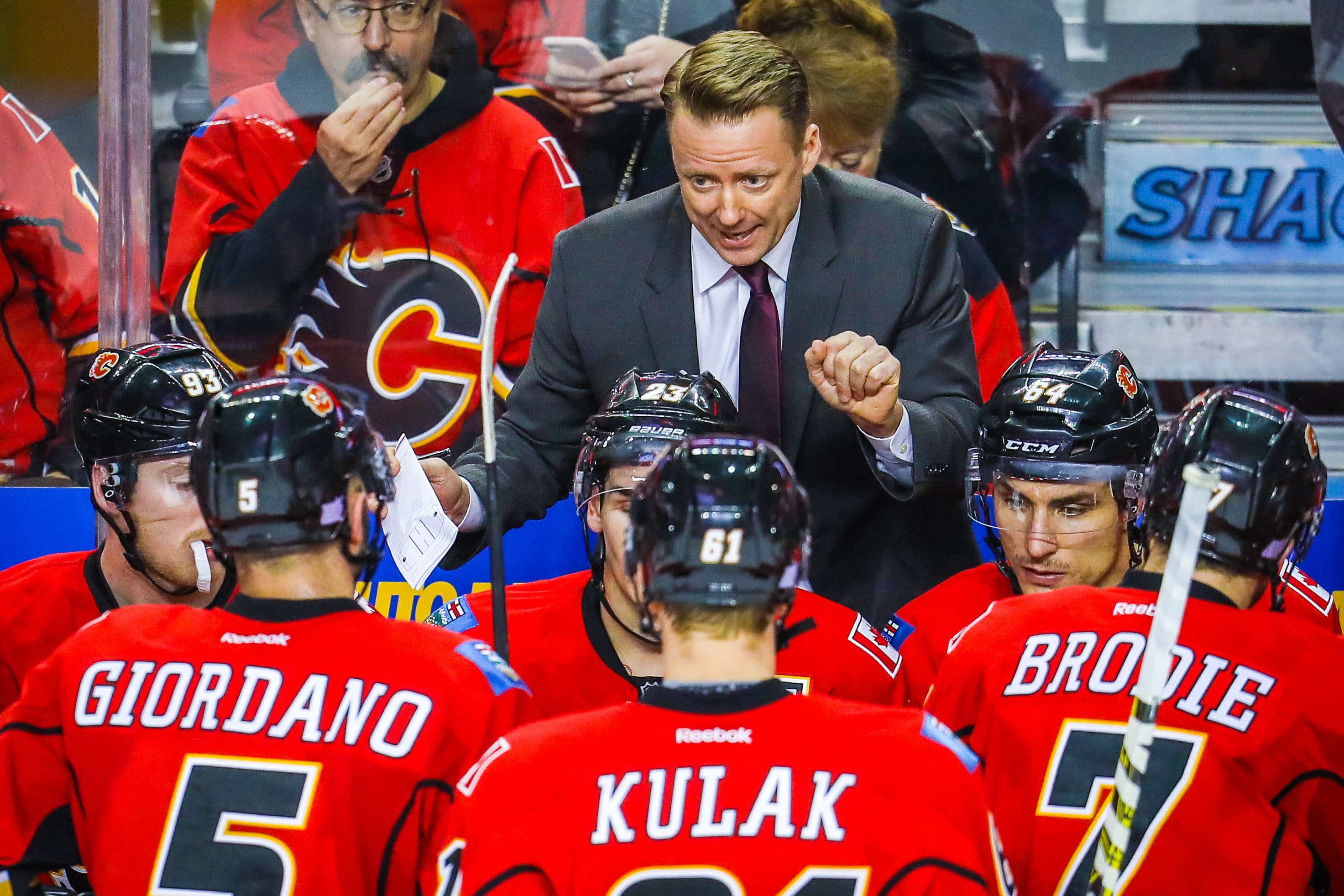Glen Gulutzan loves shot-balanced defensive pairings

By Ryan Pike
6 years agoWhen Glen Gulutzan became the head coach of the Calgary Flames prior to the 2016-17 season, everyone braced for big changes. Aside from making a few tweaks to systems and deployments, Gulutzan didn’t exactly throw the proverbial baby out with the bathwater compared to what Bob Hartley did as coach. If something worked, Gulutzan seemed content to stick with it.
One big thing he’s largely avoided is playing left-shot defensemen – such as Mark Giordano and T.J. Brodie – together in a pairing, opting almost exclusively for pairings with shot balance. Left-shot players have almost entirely played the left side, right shot players the right side.
Is this the “right” move?
The theories
We spoke to Gulutzan a couple weeks back after a practice about his preference for left-shot/right-shot pairings.
I like to have lefty-righties because it spreads the ice out a little bit more. You can sling the puck east-west better, which helps create space in transition so I like that. I think it’s easier in the offensive zone to move the puck east and west and to shoot off the walls and direct. So I think it creates a little bit more offense. I don’t know if it helps in breakouts at all. I think there’s a benefit for an off-side guy coming around the net on his forehand, so I don’t think it helps us there, but I think it spreads the ice out a bit offensively through the neutral zone and offensively in the offensive zone.
An analysis by our friends at Hockey Graphs suggests that it should also help with breakouts and transitions. Speaking with a few NHL scouts, playing with shot-balanced pairings should also help with denying opposition zone entries off the rush. The logic behind it is that if you’re a left-shot defender defending an entry on the left side, you can more easily (a) protect passes from the middle of the ice with your stick in your right hand while (b) using positioning to angle the puck-carrier towards the boards and force a dump-in. If you’re a right-shot defending a left side entry, you lose the ability to angle as easily and to protect the mid-ice passes.
Possession-wise, the aforementioned analysis by Hockey Graphs suggested that it does make a big difference. (See all that blue for left/right pairings? That means a positive difference compared to left/left or right/right pairs.)

courtesy Hockey Graphs
Hockey Graphs’ analysis concluded that “… pairings made up of at least one defenseman playing his off-side generally fare worse than left+right handed duos.”
Most common usages
Per our friends at Dobber Hockey, who track such things for fantasy purposes, here are the 10 most common defensive pairings under Bob Hartley in his final season as Flames head coach (2015-16):
- Mark Giordano – T.J. Brodie (left/left)
- Kris Russell – Dougie Hamilton
- Mark Giordano – Dougie Hamilton
- Deryk Engelland – Dennis Wideman (right/right)
- Kris Russell – Dennis Wideman
- Deryk Engelland – Dougie Hamilton (right/right)
- Mark Giordano – Deryk Engelland
- T.J. Brodie – Dougie Hamilton
- Mark Giordano – Dennis Wideman
- Tyler Wotherspoon – Jakub Nakladal
The most-used pairing was a lefty pairing, while half of the six most used pairings involved a player playing on their “off” side. Here’s the same rundown, but for Gulutzan’s first season in Calgary (2016-17):
- Mark Giordano – Dougie Hamilton
- T.J. Brodie – Dennis Wideman
- Jyrki Jokipakka – Deryk Engelland
- T.J. Brodie – Michael Stone
- Matt Bartkowski – Deryk Engelland
- T.J. Brodie – Deryk Engelland
- Brett Kulak – Deryk Engelland
- Jyrki Jokipakka – Dougie Hamilton
- Mark Giordano – T.J. Brodie (left/left)
- Mark Giordano – Dennis Wideman
Prior to Travis Hamonic’s injury this season, all 10 of Gulutzan most-used pairings were all shot-balanced. (The injury caused Gulutzan to use a lefty/lefty pairing of Kulak and Bartkowski for a couple games before reverting to a shot-balanced pairing by swapping Rasmus Andersson in for Bartkowski.)
Some results
In theory, Gulutzan’s reliance on shot-balanced pairings should (all things being equal) lead to better possession stats. While the Flames have played a more puck possession based style of game regardless of defensive pairings – and so it’s tough to separate the impacts of player usage and playing style – they have seen increased possession numbers when you compare the 10 most-used pairings from Hartley’s last year to Gulutzan’s first year.
- Hartley’s most-used 10: 48.1%
- Gulutzan’s most-used 10: 50.7%
Hartley had two pairings with worse possession numbers than Gulutzan’s worst commonly-used pair: Bartkowski and Engelland were 44.8% together in 2016-17, while Engelland and Wideman were 37.8% and Russell and Wideman were 43.5%. (Gee, I wonder what the common thread was there?)
If you’re a skeptic, I’ll point you to the “rising tide lifts all boats” philosophy: the entire Flames roster went from 48.4% Corsi For to 50.5% from Hartley’s last year to Gulutzan’s first. It’s impossible to claim that the shot-balanced defensive pairings were the reason for the increase, but it’s hard to argue that they didn’t help a bit based on the performances of the pairings involved.
Recent articles from Ryan Pike





